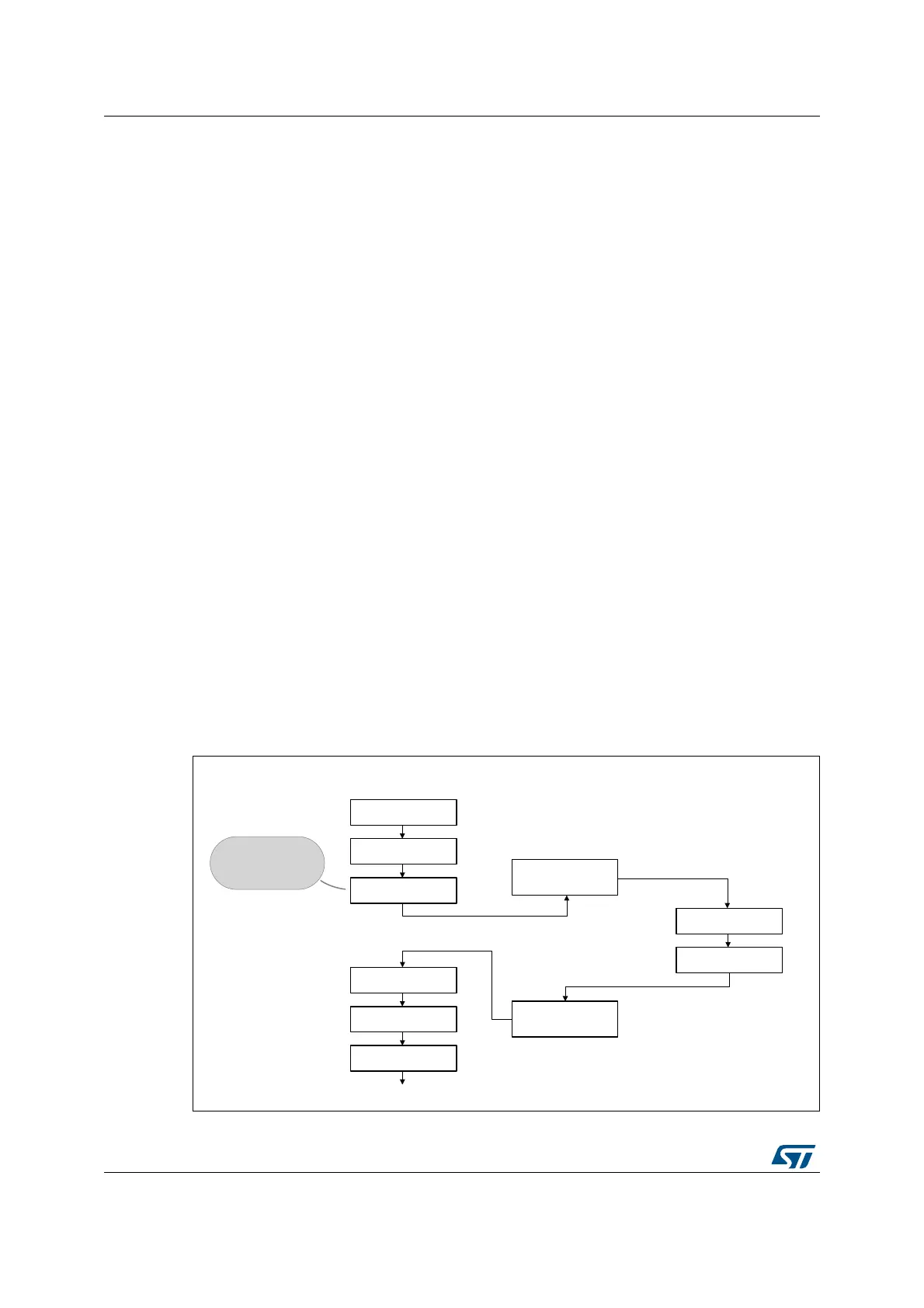AES hardware accelerator (AES) RM0440
1500/2126 RM0440 Rev 4
34.4.6 AES ciphertext stealing and data padding
When using AES in ECB or CBC modes to manage messages the size of which is not a
multiple of the block size (128 bits), ciphertext stealing techniques are used, such as those
described in NIST Special Publication 800-38A, Recommendation for Block Cipher Modes
of Operation: Three Variants of Ciphertext Stealing for CBC Mode. Since the AES peripheral
does not support such techniques, the application must complete the last block of input data
using data from the second last block.
Note: Ciphertext stealing techniques are not documented in this reference manual.
Similarly, when AES is used in other modes than ECB or CBC, an incomplete input data
block (that is, block with input data shorter than 128 bits) must be padded with zeros prior to
encryption (that is, extra bits must be appended to the trailing end of the data string). After
decryption, the extra bits must be discarded. As AES does not implement automatic data
padding operation to the last block, the application must follow the recommendation given
in Section 34.4.4: AES procedure to perform a cipher operation on page 1496 to manage
messages the size of which is not a multiple of 128 bits.
Note: Padding data are swapped in a similar way as normal data, according to the
DATATYPE[1:0] field of the AES_CR register (see Section 34.4.13: AES data registers and
data swapping for details).
34.4.7 AES task suspend and resume
A message can be suspended if another message with a higher priority must be processed.
When this highest priority message is sent, the suspended message can resume in both
encryption or decryption mode.
Suspend/resume operations do not break the chaining operation and the message
processing can resume as soon as AES is enabled again to receive the next data block.
Figure 509 gives an example of suspend/resume operation: Message 1 is suspended in
order to send a shorter and higher-priority Message 2.
Figure 509. Example of suspend mode management
MSv42148V1
128-bit block 1
Message 1
128-bit block 2
128-bit block 4
128-bit block 5
128-bit block 6
...
AES suspend
sequence
AES resume
sequence
128-bit block 1
128-bit block 2
Message 2
128-bit block 3
New higher-priority
message 2 to be
processed

